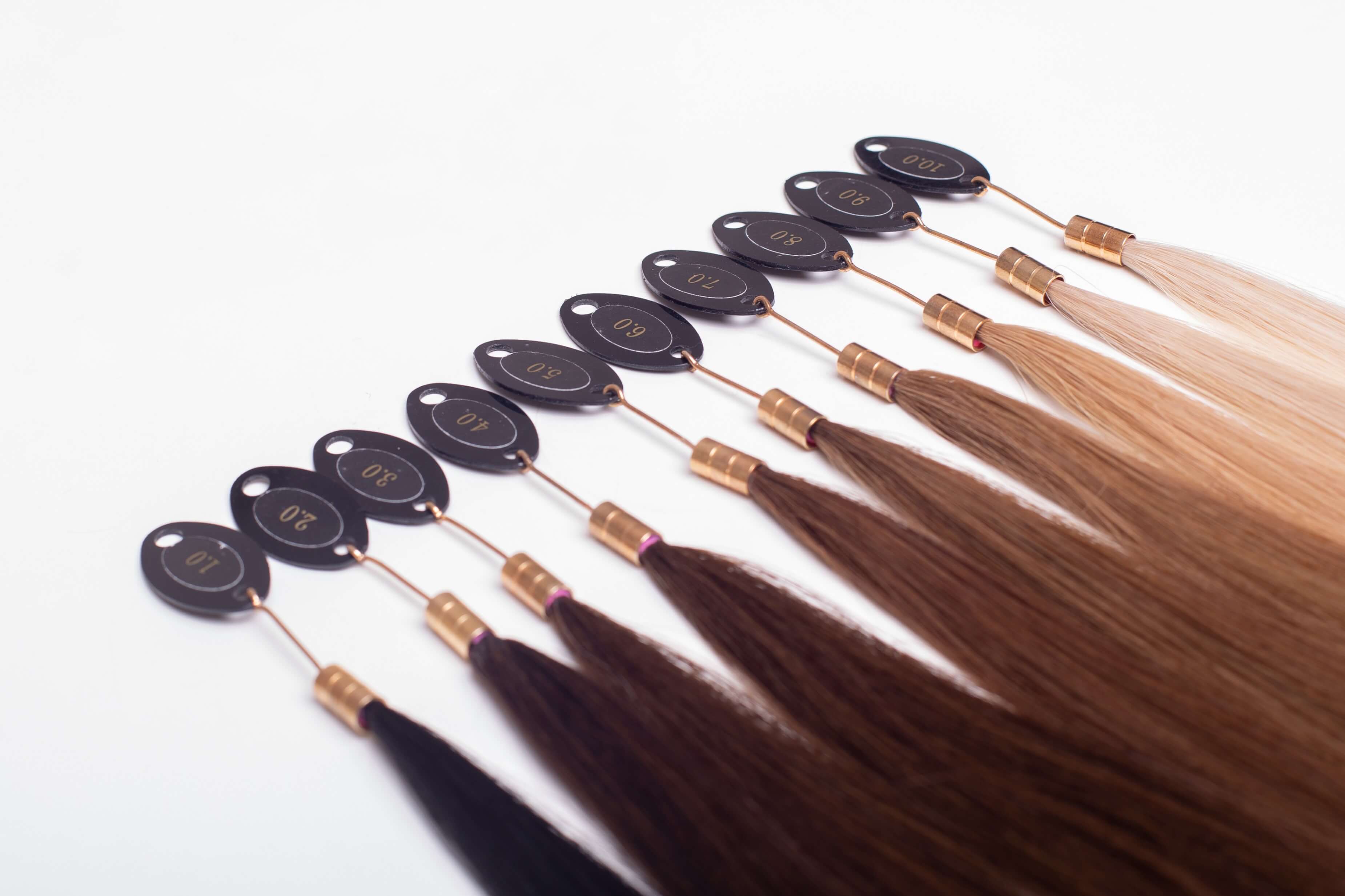Debunking Myths: Are Hair Extensions Bad for Your Hair?
Do hair extensions ruin your natural hair? It’s one of the most searched questions in the beauty world, and for good reason. Welcome to the world of hair extensions, where hair extensions can be the holy grail for instant length, volume, and transformation. However, they also come with fears: breakage, thinning, bald spots, and scalp irritation.
At Noelle Salon, we hear these concerns daily. The truth? Extensions aren’t inherently bad. But the wrong method, poor maintenance, or DIY application can absolutely harm your hair.
This blog unpacks what actually causes damage, and more importantly, how to avoid it. Backed by expert knowledge and years of salon experience, we’ll break down every extension method and help you choose what’s safe for your hair type.
How Extensions Can Damage Hair?
Hair damage from extensions is rarely caused by the extensions alone, it’s usually how they’re installed, maintained, or removed. Here are some of the reasons you should consider:
1. Traction Alopecia and Scalp Tension
Tightly installed extensions can pull at your roots, causing inflammation of hair follicles. Over time, this tension can lead to traction alopecia, permanent hair loss around the hairline and scalp.
2. Breakage, Matting, and Shedding
Incorrect brushing, harsh elastics, or using too-heavy extensions on thin hair can cause mid-length breakage and knots that damage both your natural hair and the extensions.
3. Poor Removal Techniques
Pulling out tape-ins or fusion bonds without professional tools? That’s a fast track to torn hair and weakened roots.
4. Product Buildup and Chemical Irritation
Adhesives, serums, and conditioners can clog follicles or irritate sensitive scalps, especially when not washed out regularly or when applied too close to the scalp.
Types of Hair Extensions
If you’ve spent an embarrassing amount of time scrolling through options or wondering which method won’t wreck your roots, you’re not alone. Choosing the right hair extension is like picking the best interest savings account, you want returns (aka volume) without the long-term cost (aka breakage). Below, we break down the top types available today, their pros and cons, and which ones are best for your natural hair type.
1. Clip-In Extensions
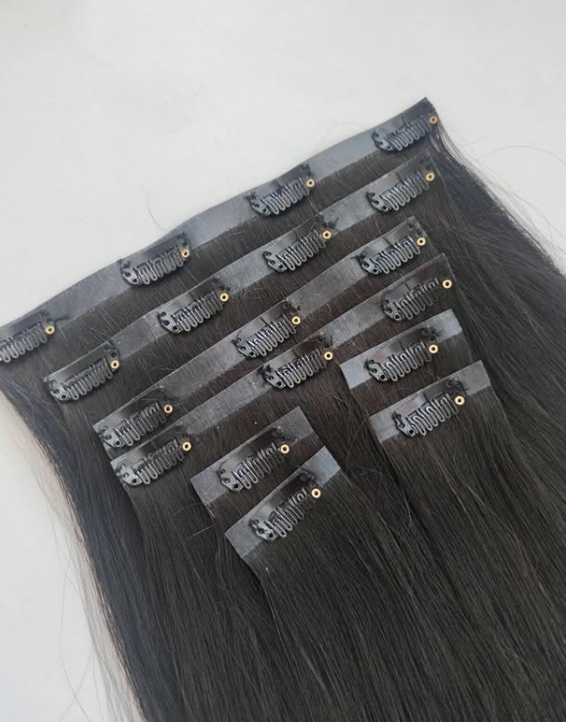
Clip-in extensions are a great way to add instant volume and length without committing to permanent methods. Perfect for special occasions or quick transformations, they’ve become a go-to solution for the average American family juggling busy routines but still craving a glam moment.
Are Clip In Extensions Bad for Your Hair?
If you’re wondering, are clip in hair extensions bad for your hair? Clip-ins are actually one of the safer bets when used correctly. One of the biggest mistakes people make is wearing them daily or placing clips in the same spot, which can lead to tension, breakage, and even thinning.
Pros:
-
Clip-ins are easy to apply and remove, no salon visits needed.
-
They're affordable, reusable, and don’t require glue or heat.
-
A huge financial nerd might even say they save you a bunch of money on styling tools.
Cons:
-
If worn daily, they can stress the same sections of hair.
-
Clipping too tightly can cause tension or breakage.
-
Skipping proper removal is one of the biggest mistakes people make.
2. Tape-In Extensions
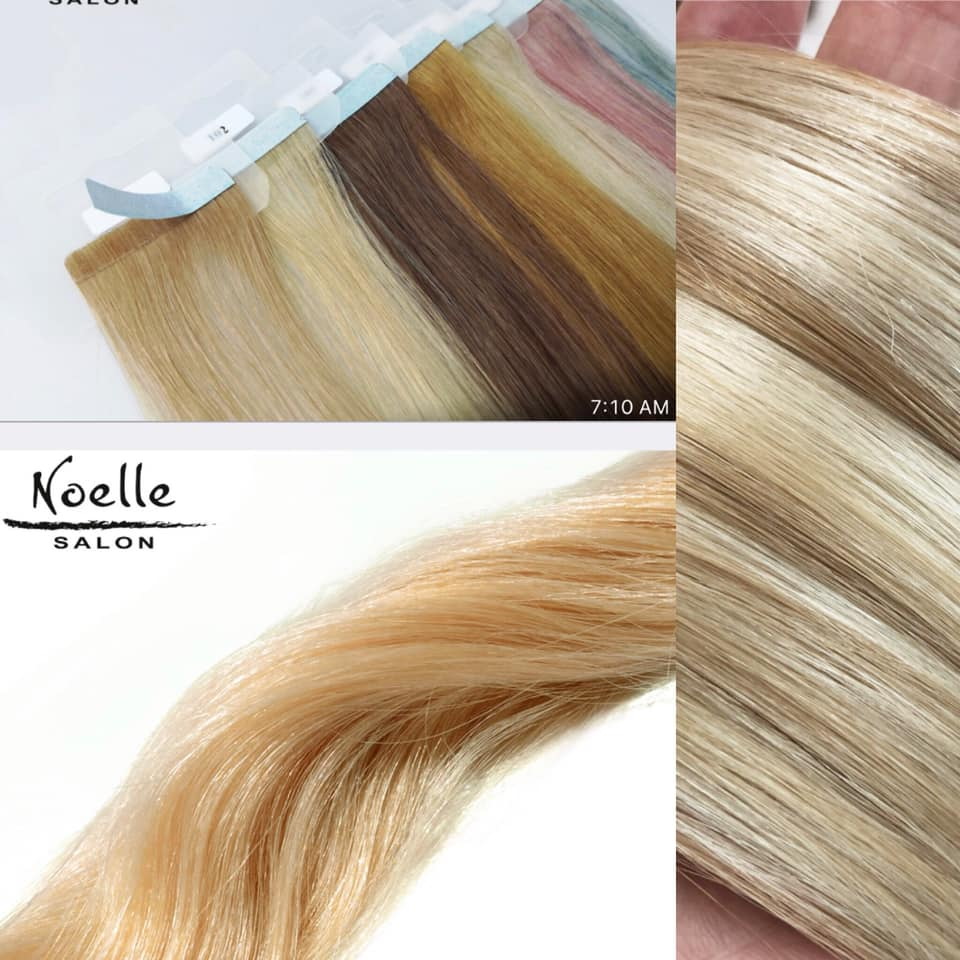
Tape-ins are a salon favourite for achieving a fuller, longer look without daily effort. They're especially popular among clients with finer hair who want a seamless blend. If you're asking, are extensions bad for your hair? Tape-ins sit somewhere in the middle. When installed and removed correctly, they can look flawless and feel weightless. .
Are Tape In Extensions Bad for Your Hair?
They can be, if applied carelessly or worn for too long without upkeep. The adhesive “sandwich” method puts pressure near the root, and if you're not careful during removal, your natural strands can suffer the consequences.
Pros:
-
Lightweight and lie flat against the scalp, offering a natural look.
-
Ideal for fine hair, no bulky bonds or visible wefts.
-
Can be reused multiple times with proper care.
Cons:
-
Adhesive buildup can cause scalp irritation or hair breakage.
-
DIY removal is one of the biggest mistakes people make.
-
Require professional installation and reapplication every 6–8 weeks.
3. Sew-In Extensions
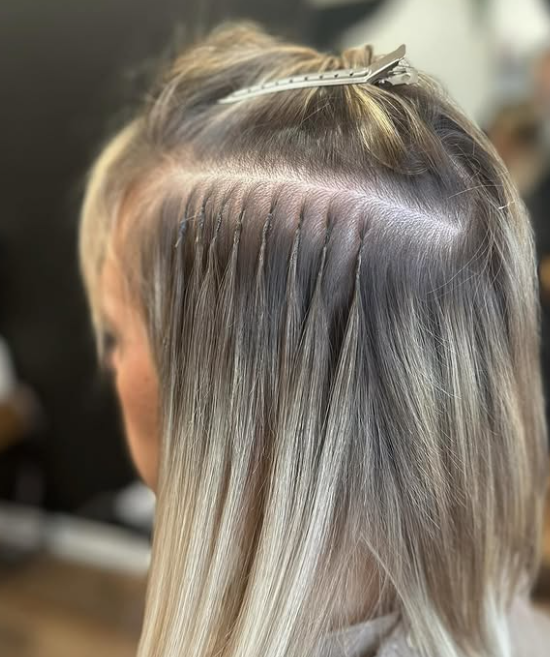
Sew-in extensions are a go-to choice for people with thick, coarse hair looking for long-lasting length and volume. Installed by braiding your natural hair into cornrows and stitching wefts onto them, they offer a secure hold and a polished finish. But if you’ve ever wondered, are extensions bad for your hair? Sew-ins can be, if tension and scalp care are ignored.
Are Sew In Extensions Bad for Your Hair?
They can be damaging if braids are installed too tightly or worn for too long without maintenance. Like a too-tight ponytail, excessive tension on your scalp over time can lead to thinning edges or even traction alopecia.
Pros:
-
Great for long-term wear and protective styling.
-
Don’t involve heat, glue, or chemicals.
-
Ideal for creating full, voluminous looks with minimal daily effort.
Cons:
-
Braids that are too tight can pull on follicles and cause hair loss.
-
Scalp may become itchy or inflamed if not properly cleansed.
-
Leaving them in too long is one of the biggest mistakes people make with extensions.
4. Hand-Tied Extensions
Hand-tied extensions are a salon favourite for those wanting fullness without the bulk of glue or tape. Installed using beads and sewn wefts, they offer a natural, flexible finish that moves like your own hair. Still wondering, are extensions bad for your hair? With hand-tieds, the answer depends on the weight of the wefts and how they’re installed.
Are Hand Tied Extensions Bad for Your Hair?
They can cause tension-related damage if the beads are too tight or if too much weight is added to fine strands. But when done properly, they’re one of the more gentle long-wear methods, especially for clients who want seamless, low-profile results.
Pros:
-
Lightweight and less bulky than traditional sew-ins.
-
Offer natural movement and blend beautifully with your hair.
-
No glue or heat is used, reducing chemical-related damage.
Cons:
-
Improper bead placement can strain the roots and cause breakage.
-
Not ideal for fine or fragile hair types due to weft weight.
-
Requires regular salon maintenance to avoid matting and tension buildup.
5. Weft Extensions
Weft extensions are incredibly versatile, they can be applied as tape-ins, clip-ins, or sewn into braided hair. This flexibility makes them a popular choice, but it also means the risk of damage depends entirely on the method used. If you’ve been asking, are extensions bad for your hair?, Weft extensions can be safe or risky, depending on your install and upkeep.
Are Weft Extensions Bad for Your Hair?
The weft itself isn’t the issue, it’s how it’s installed. A heavy weft on fine hair or a tight braid with a sewn-in weft can easily lead to tension, breakage, or scalp stress.
Pros:
-
Available in multiple methods, making them adaptable to different hair types.
-
Offer great volume and fullness, especially for thicker hair.
-
Can be reused with proper care, offering long-term value.
Cons:
-
Heavy wefts can put stress on fragile roots if not matched to your hair density.
-
DIY installs are one of the biggest mistakes people make with this method.
-
Poor placement can lead to visible tracks or discomfort.
6. Fusion Extensions
Fusion extensions are the go-to for long-term wear and a super seamless finish. Installed strand by strand using heat to bond keratin tips to your natural hair, they’re often praised for their durability and natural movement. But before booking, it’s worth asking: are extensions bad for your hair when heat and glue are involved?
Are Fusion Extensions Bad for Your Hair?
They can be, especially if installed or removed incorrectly. The bonding process applies heat to your natural strands, which can weaken them over time, particularly if your hair is already fine or damaged.
Pros:
-
Long-lasting wear, typically up to 3–4 months with proper care.
-
Offers one of the most natural blends, with no visible wefts or beads.
-
Ideal for full-volume transformations or adding length discreetly.
Cons:
-
Heat application during bonding can stress and damage hair shafts.
-
Removal requires professional tools and patience, rushed DIY removals cause breakage.
-
Not suitable for very fine, fragile, or previously over-processed hair.
7. Keratin Extensions
Keratin extensions are bonded to your natural hair using a keratin-based adhesive and a heating tool. The result? A sleek, long-lasting look that blends beautifully. But if you're wondering are extensions bad for your hair, keratin bonds are among the riskiest if misused.
Are Keratin Extensions Bad for Your Hair?
Yes, if applied to fragile hair or removed without care. The heat and adhesive can weaken the hair shaft and cause breakage near the root.
Pros:
-
Seamless finish with no visible attachments.
-
Lasts 3–4 months with proper maintenance.
-
Feels and moves like your natural hair.
Cons:
-
Heat application can compromise hair integrity.
-
Not ideal for fine or chemically treated hair.
-
Difficult and time-consuming to remove at home.
8. K-Tip Extensions
K-Tip extensions are a type of keratin bond, applied with heat and bonded close to the roots. Known for their longevity, they provide a flawless finish when applied strand by strand. Wondering are extensions bad for your hair if they involve heat? With K-Tips, the answer depends on the condition of your hair.
Are K Tip Extensions Bad for Your Hair?
They can be damaging if left in too long or bonded incorrectly. Like other heat-applied methods, they require professional install and removal to avoid stress on your strands.
Pros:
-
Invisible bonds and a natural finish.
-
Great for blending in with layers or fine sections.
-
Highly durable and customisable.
Cons:
-
Keratin can cause dryness if not cared for properly.
-
Improper placement adds tension to roots.
-
Needs regular maintenance to avoid tangling near the bond.
9. I-Tip Extensions
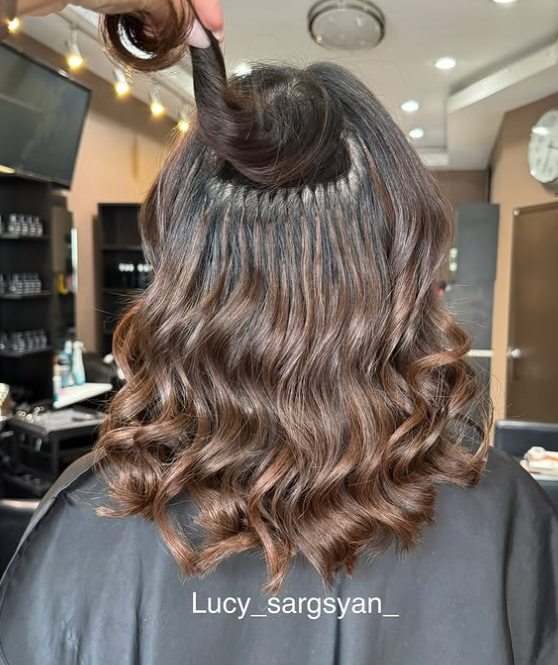
I-Tips are applied using small beads and do not require glue or heat, making them a gentler option for many. They offer a strand-by-strand installation, similar to K-Tips, without adhesive. If you’re looking for a safer method, this one is often mentioned when answering are extensions bad for your hair.
Are I-Tip Extensions Bad for Your Hair?
They’re less damaging than glue-based methods but still require careful sectioning and maintenance to avoid tension or breakage.
Pros:
-
No glue or heat used, great for chemical-free applications.
-
Can be reused and adjusted during move-up appointments.
-
Lays flat for a comfortable, low-profile look.
Cons:
-
Improper placement can lead to strain on natural hair.
-
Beads may slip or break if not maintained correctly.
-
Needs regular upkeep every 6–8 weeks.
10. Nano Extensions
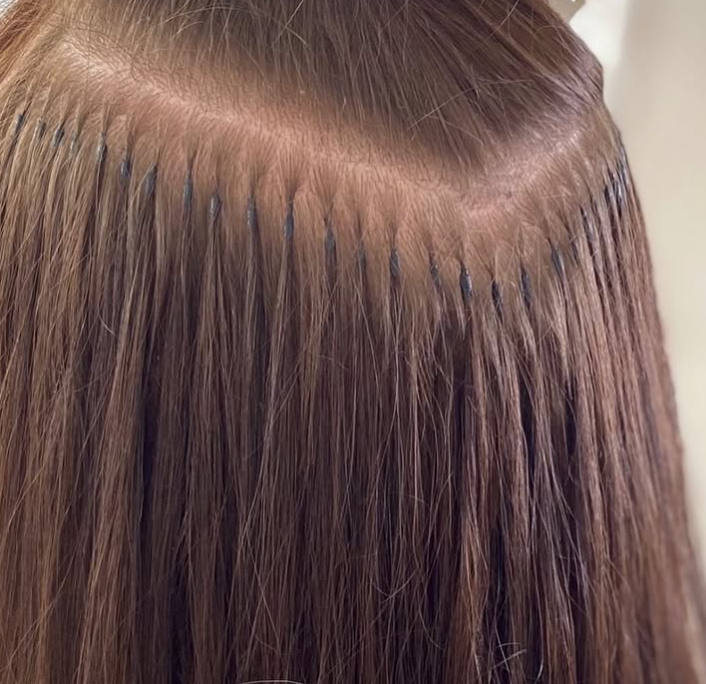
Nano extensions are one of the most discreet and lightweight methods available. Using tiny beads that are 90% smaller than traditional microbeads, they’re ideal for clients with fine or thinning hair. But even with these benefits, are extensions bad for your hair when it comes to nanos? Only if ignored or poorly installed.
Are Nano Extensions Bad for Your Hair?
They are generally considered safe, especially for thin hair, but require frequent upkeep and gentle handling.
Pros:
-
Super lightweight and virtually invisible in the hair.
-
Perfect for filling gaps or adding subtle volume.
-
No glue, heat, or tape involved.
Cons:
-
Still places tension on the scalp if overfilled.
-
Beads may cause slippage or tangling when neglected.
-
Requires regular maintenance to prevent matting.
11. Bead Extensions
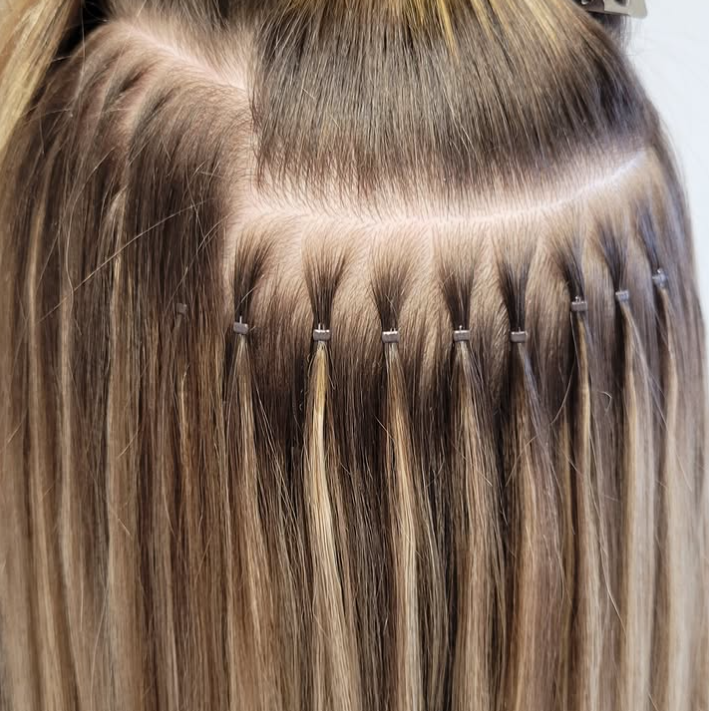
Also called microbead or micro-link extensions, these use small clamps to secure wefts or strands. They don’t involve adhesive or heat, which is a plus. But if you’ve ever asked are extensions bad for your hair, bead tension can still cause breakage without proper care.
Are Bead Extensions Bad for Your Hair?
They can be if not installed with the right spacing or removed incorrectly. But with professional oversight, they’re a relatively gentle option.
Pros:
-
No glue, heat, or chemicals used.
-
Beads are adjustable and reusable.
-
Great for achieving length and volume.
Cons:
-
Incorrect bead placement can lead to pulling and shedding.
-
Can slip or twist if not installed securely.
-
Not ideal for very fine or fragile hair.
12. Tie-In Extensions
Tie-ins typically refer to extensions that are sewn in or beaded to small sections of hair. They’re strong, secure, and versatile, but like any method, they come with risks. If you're asking are extensions bad for your hair, tie-ins are all about the execution.
Are Tie-In Extensions Bad for Your Hair?
They can be if installed too tightly or on fragile hair. Scalp strain is the biggest concern with tight braiding or poorly placed beads.
Pros:
-
Customizable install method and tension control.
-
Long-lasting hold with proper maintenance.
-
No adhesives or heat required.
Cons:
-
Braids or beads may cause tension and discomfort.
-
Improper placement = increased risk of breakage.
-
Requires professional maintenance.
13. Dread Extensions
Dread extensions, often used for style, culture, or transitioning, are created by attaching synthetic or natural hair to existing locs. While bold and expressive, many still ask are extensions bad for your hair when it comes to dreads. The answer lies in weight, hygiene, and scalp tension.
Are Dread Extensions Bad for Your Hair?
Yes, if they’re too heavy or not properly maintained. Neglect can cause matting, scalp stress, or hair thinning.
Pros:
-
Long-lasting and unique stylistic choice.
-
Offers instant length and density for natural locs.
-
Allows for cultural expression and identity.
Cons:
-
Heavy locs can pull on natural roots.
-
Risk of mildew or scalp buildup if not kept clean.
-
Hard to remove or switch styles frequently.
14. Weave Extensions
Weaves are a classic choice for protective styling, especially in the textured hair community. Sewn into braided bases, they offer excellent coverage and versatility. But tight braids and neglect can lead to damage. So are extensions bad for your hair if it’s a weave? Not if it’s done right.
Are Weave Extensions Bad for Your Hair?
They can cause scalp tension and thinning edges if the braids are too tight or worn too long without care.
Pros:
-
Protects natural hair from heat and styling tools.
-
Versatile styling, wear straight, curly, or braided.
-
Great for achieving full, voluminous looks.
Cons:
-
Tight braids can lead to traction alopecia.
-
Requires proper scalp access for cleaning.
-
Should not be worn for extended periods without maintenance.
Are Hair Extensions Bad for Your Scalp?
Hair extensions can affect your scalp, especially when applied too tightly or worn for too long. The most common issues? Irritation, clogged pores, and tension on the follicles.
Watch for:
-
Itching, redness, or soreness
-
Product buildup around adhesive bonds
-
Tension headaches or tightness from sew-ins or tip hair extensions
How to avoid it:
-
Give your scalp breaks between installs
-
Use sulphate-free shampoo and lightweight hair care products
-
Gently massage your scalp weekly to boost circulation
How Bad Are Extensions for Your Hair, Really?
The truth? It’s not the extensions, it’s how you use them.
Extensions become damaging when:
-
The wrong method of application is used for your hair type
-
You skip maintenance or DIY the install
-
You wear long-term styles (like tip hair extensions) without giving your strands time to recover
But when applied professionally and cared for properly:
-
Human hair extensions can enhance volume without breakage
-
You can still maintain strong, healthy hair underneath
-
You’ll avoid the biggest mistakes people make with extension wear
So, if you're asking, are extensions bad for your hair? They don’t have to be.
How to Prevent Hair Extension Damage
Worried about damage? With the right choices and care, you can enjoy the benefits of extensions without compromising your natural hair. Here’s how:
-
Choose the right type of extension: Match the method to your hair density. Opt for lightweight options like tape-ins or V-Light for fine or thinning hair, and more durable methods like sew-ins for thicker textures.
-
Avoid DIY installs: Extensions must be applied with precision. Improper placement or too much tension can cause breakage, traction alopecia, or scalp stress.
-
Take breaks between installs: Just like your skin needs rest, your hair does too. Plan breaks between extension cycles to allow your scalp and strands to recover.
-
Use gentle, sulfate-free products: Harsh shampoos and conditioners can weaken bonds and dry out both your natural hair and extensions. Stick to salon-recommended, extension-safe products.
-
Brush with care: Use a loop or extension-friendly brush, starting from the ends and working your way up. Avoid tugging near the bonds to prevent loosening or pulling.
-
Never sleep with wet hair: Wet hair is more fragile and prone to tangling. Always dry your hair fully before bed and consider sleeping in a loose braid to reduce friction.
-
Limit heat styling: Extensions may tolerate heat, but daily use of hot tools can shorten their lifespan and damage your natural hair. Use a heat protectant and keep temperatures moderate.
-
Secure your hair at night: Tie it in a loose braid or ponytail to prevent matting and tension on the roots while you sleep.
Are Extensions Bad for Your Hair? Not When You Trust the Right Salon
Still wondering are extensions bad for your hair? At Noelle Salon, we don’t just apply extensions, we protect the hair underneath.
With decades of experience, we specialise in safe, strand-by-strand methods for all hair types, including V-Light, Keratin Bond, Sew-in, and Mesh Integration. Whether you have fine, thinning, or natural hair, our team ensures the right extension method for you, with expert application and honest advice.
We’re proud to serve the Boston area with a salon experience that puts your hair health first. From custom consultations to aftercare plans, we’re here to make sure you leave with fuller, stronger, more confident hair.
Final Thoughts: Should You Be Scared of Extensions?
Hair extensions aren’t inherently bad for your hair; it all comes down to how you use them. When applied and maintained correctly, extensions can be a safe, stylish way to add volume, length, and confidence to your look. But ignoring proper care, choosing low-quality products, or leaving them in too long can lead to damage. The key is balance: listen to your hair, work with a trusted stylist, and invest in quality extensions that match your hair’s needs.
Whether you're going for a bold transformation or a subtle boost, extensions can be a powerful tool. Just treat your hair with the love and attention it deserves. Healthy hair and stunning style can absolutely go hand in hand.
Frequently Asked Questions
Why is my hair so thin after extensions?
It may be due to tension, poor removal, or skipping breaks between installs. Give your hair rest and consult a stylist for recovery.
Can your hair grow healthy with extensions?
Yes, if installed properly and maintained well. Scalp care, lightweight methods, and regular breaks help your natural hair stay strong underneath.
Can hair extensions permanently damage hair?
Only if used improperly or overused. Damage like traction alopecia can be long-lasting, so proper tension and removal are key.
What is the least damaging hair extension method?
Clip-ins and halo extensions are the safest since they don’t attach directly to the root or use heat, glue, or beads.
What’s the safest way to remove hair extensions?
Always have them removed by a professional. Using proper tools ensures no breakage or tearing of your natural strands.

